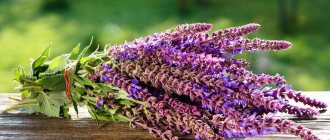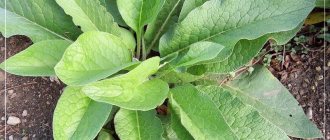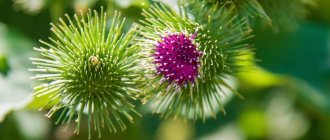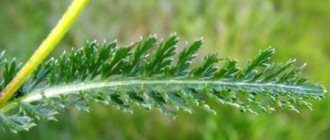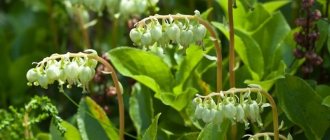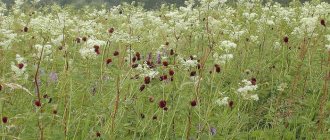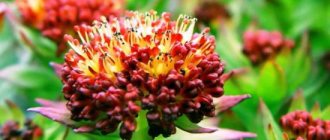Hyssop has medicinal properties. Medicinal herbs are often collected wild. But already in the time of Peter I, a medicinal garden was founded, which over time grew into a luxurious botanical garden. The initiative took root, and almost every housewife has a small, and sometimes quite voluminous, bed where spicy, fragrant and medicinal herbs grow in their garden or summer cottage. Often they also perform a decorative function, such as hyssop. It grows well in almost any soil and, if the minimum requirements for watering and care are met, it produces a good harvest, providing garden owners with excellent medicinal raw materials for the treatment of many diseases.
What it looks like and where it grows
In its wild form, hyssop is found in Europe and Asia. It continues to grow on hillsides, choosing rocky, dry areas. But now, rarely does anyone hunt for a medicinal plant in its natural conditions, preferring to grow a fragrant and elegant subshrub at home. It began to be cultivated in ancient times. The medicinal properties of hyssop were well known in Ancient Greece, used in medicine, cooking, and cosmetology.
The plant has several names, and depending on the region it is called bee grass or blue St. John's wort. Indeed, there is some external similarity, but experienced herbalists will never confuse these plants. Due to its wide range of uses, it is called a country healer and they always try to plant it in a corner of the plot, especially since it looks really elegant.
The low shrub reaches a height of 65–70 cm; numerous stems emerge from the powerful root, covered with strong bark at the base and gradually thinning towards the crown. The leaves are arranged in tiers, elongated, narrow, with tips slightly curved inward. Flowering begins in July and lasts until September. The color of the flowers is mainly blue, with lilac or pink shades less common. White flowers can sometimes be seen, but these are considered the exception to the rule. The bush is a perennial, tolerates drought and harsh winters well, opening its fragrant leaves towards the sun every spring. The leaves and flowers emit a strong spicy aroma that repels pests from the garden area and attracts bees. It is often planted around the apiary, collecting healing fragrant honey.
Kinds
There are not many of them, only 3 varieties are known.
- Narrow-leaved or medicinal hyssop is most often used to prepare decoctions, infusions and tea. Its flowers are collected in small inflorescences of 8–10 pieces. It is harvested as needed throughout the summer, from the moment the first buds open until the end of flowering, cutting off the upper half of the stems along with the leaves and flowers. Hyssop planted in the garden lives well in one place for up to 10 years, without requiring replanting.
- Cretaceous is so named for its predilection for soils with a high chalk content. It is a rare species and is listed in the Red Book. It differs from the ordinary one in its smaller size and lower level of decorativeness. The smell is pungent with a balsamic tint, the inflorescences have a cornflower blue hue.
- Anise is very beautiful in appearance, it smells like anise. To enhance the smell, just lightly rub the leaf. It is sometimes called licorice mint for its specific aroma. It is easy to distinguish it from other species by the purple spots on the leaves and the height of the stems, reaching 100 cm under favorable conditions. The blue flowers are collected in double dense inflorescences, open gradually, starting from the lower tier, and the bush retains its spectacular appearance until autumn. In cooking, tender buds and already blooming flowers are used, which are added to salads, giving them a unique spicy flavor.
It is worth considering: species can cross-pollinate when grown together, so it is better to plant them in different segments of the garden plot.
See also: BADAN - medicinal properties and contraindications
Collection and storage
For all varieties, the collection time and harvesting principle are the same. Much depends on the purpose of use. For fresh salads, leaves and flowers are picked by hand as needed. For use in decoctions, it is better to start harvesting at the very beginning of flowering. If you plan to store the raw material in crushed form, then it is better to wait until the height of flowering, when the plant becomes most fragrant.
It is not necessary to select the hyssop parts separately. Simply cut the stems and tie them into a broom and hang them in a shady, well-ventilated place.
Important: hyssop contains many essential oils. When exposed to direct sunlight during drying and storage, they evaporate, reducing the medicinal properties of the plant several times.
Finished raw materials are stored in linen bags. When chopping, it is more convenient to place the herb in a container with a tightly sealed lid. The dried plant retains its original properties for 2 years.
Description of the plant
Hyssop
The wild culture is found on forest edges and in the steppes of the European part. In the Caucasus and Altai it grows in dry and rocky places. Hyssop officinalis is a herbaceous plant with a strong tap root. There are many stems, they reach a height of up to 70 cm, pubescent or almost bare, extremely hard at the base. Hyssop herb is one of the medicinal plants that is known to have been used by the famous ancient Greek healer and philosopher Hippocrates. The herb is mentioned in many ancient herbal books: it was used in cooking, cleansing cathedrals, and also to protect oneself from the plague. On the pages of the Bible, speaking about metaphysical cleansing, King David said: “Sprinkle me with hyssop and I will be clean.” In the Old Testament, blue St. John's wort is written about as a herb, decoctions of which are drunk during the Jewish Passover.
Healing raw materials are collected during flowering. Dry the upper part of the plant in the attic, under a canopy or on pallets in a dryer, at a temperature of at least +60 C. It is better to store the herb in canvas bags, glass or wooden containers, but no more than two years. Representatives of traditional medicine have long used the medicinal properties of blue St. John's wort, bringing great benefits to people. Bee grass is characterized by the ability to reduce tone, reduce the contractile activity of smooth muscles, remove bronchial secretions from the respiratory tract, and improve the functioning of the gastrointestinal tract.
What does hyssop look like?
Hyssop (Hyssopus officinalis)
Blue St. John's wort is a lovely miniature shrub with lovely purple flowers. Perhaps not many medicinal plants look as attractive as hyssop does. Hyssop flowers especially attract attention - blue, indigo, ultramarine, sometimes pink or snow-white. The flowers form intermittently spike-shaped inflorescences. The leaves are elongated, poisonous green above, olive green below. The leaves on the lower part of the stem are larger than those on the upper. Four chocolate-colored nuts form the fruit.
The herb has a strong aroma. Blooms all summer. The plant is unpretentious, so it will not be difficult for even a novice gardener to grow a fragrant, fragrant herb in the garden.
Chemical composition
Small narrow leaves and bright inflorescences contain many useful elements. Among them:
- tannins;
- flavonoids;
- organic acids;
- bitterness;
- essential oils;
- glycosides;
- resins;
- gum;
- ascorbic acid;
- alcohols;
- camphene;
- cymol;
- cineole
The composition includes biologically active substances that allow the plant to be used as a medicine.
See also: KALANCHOE - medicinal properties, contraindications and use
Summing up
Medicinal hyssop is a very beautiful and healthy herb with a tart, bitter taste and exquisite spicy aroma. Thanks to these properties, this plant has found wide use in the culinary and perfume industries. And thanks to its valuable and useful composition, it is often used for medicinal and cosmetic purposes. However, like all other medicines, hyssop is not useful for everyone and in some cases can be harmful to health. Therefore, before using it as a medicine, you should discuss it with your doctor.
More fresh and relevant information about health on our Telegram channel. Subscribe: https://t.me/foodandhealthru
We will be grateful if you use the buttons:
The healing properties of the herb hyssop
Blue St. John's wort deservedly received the title of country doctor. It is used in many folk recipes as an anti-inflammatory, wound-healing, and disinfectant. It is also used to get rid of intestinal parasites by brewing it as tea. The smell is reminiscent of thyme and mint, has a calming effect, relieves excessive irritation, and prevents the development of depression. A powerful therapeutic effect is achieved in the prevention and treatment of disorders of the central nervous system. It is important that with a pronounced sedative effect, hyssop decoctions do not cause drowsiness or inhibition of reactions. There is an increase in memory capacity, attention, and ability to concentrate.
For people suffering from frequent respiratory diseases and bronchitis, hyssop is useful for its antispasmodic effect. It dilates blood vessels, eliminates cough, facilitates breathing, and has an expectorant effect. Essential oils when inhaled relieve inflammation and suppress the development of pathogenic bacteria.
During the period of course use of hyssop-based preparations, the secretory function of the gastrointestinal tract is improved, the fermentation of juices is enhanced, a mild laxative effect is manifested, and bile circulation is improved.
The plant’s ability to accelerate regeneration, stop the proliferation of staphylococcal infections, prevent inflammation of wounds, and eliminate abscesses is highly valued.
Decoctions, infusions and compresses based on hyssop are recommended:
- for diseases of the respiratory system, including asthma and tuberculosis;
- fungal skin lesions;
- increased emotional excitability;
- hyperhidrosis;
- rheumatism;
- diseases of the genitourinary system;
- frequent colds.
Hyssop combines well with other herbal ingredients, honey, licorice root, berries and raspberry leaves.
For women
Herbal decoctions relieve the severity of PMS and menopausal syndrome, improve skin condition, and slow down age-related changes. Extracts, extracts and essential oils have found their use in cosmetology.
See also: Black elderberry - medicinal properties
For men
The plant is a natural aphrodisiac. The product is prepared from flowers and white wine, where for 1 tbsp. A spoonful of plant material equals 1 liter of drink. The infusion is kept for 10 days in a cool, dark place. To ensure complete dissolution of essential oils, shake the container daily. Take 50 drops 2-3 hours before bedtime.
For children
Recommendations for use are general; the plant is effective for respiratory diseases and inflammatory processes. Children under 12 years of age should not use blue St. John's wort, except in cases where the predicted benefit outweighs the possible harm.
Blank
To use hyssop for medicinal purposes, the tops of the stems on which the shoots and leaves are located are cut off in July-August, unless another flowering period is dictated by special weather conditions. The collected grass must be tied into bundles, which must be dried in the shade, protected from precipitation. You can use a canopy or place the raw materials in a dark, ventilated area. Dryers will help speed up this process, the temperature in which should be set at 30 degrees.
Dry medicinal raw materials should be crushed. Securely closing tin containers or small cotton bags are suitable for storing it. In this case, the pleasant smell of the plant will not be lost for 6-8 months, after which it will gradually begin to evaporate.
Despite the fact that the maximum shelf life of raw materials is about 2-3 years, the beneficial properties of some active substances weaken significantly after just a year. Therefore, it makes no sense to harvest “blue St. John’s wort” in large quantities. The quality of a dry product is primarily determined by color - raw materials suitable for consumption should not have a brown or rusty tint.
Important note! During the drying process, the ambient temperature should be within 35 degrees. This will allow you to fully preserve the healing properties of the essential components included in the plant.
Herb hyssop in medicine
The plant is included in the list of officially recognized ones, its properties have been well studied. In folk recipes, it is used to urgently relieve hangovers, eliminate tremors, nausea, and restore the ability to think quickly and respond adequately to external stimuli. Decoctions are part of complex therapy for rehabilitation after operations, injuries, and large blood losses.
The use of the extract in strict dosages is practiced to prevent the development of senile dementia. In case of dysfunction of the gastrointestinal tract, flatulence, dysbiosis, decoctions can restore beneficial microflora and activate intestinal motility. For women over 40 years of age, it is useful to include herbal teas with hyssop to reduce the intensity of menopausal symptoms.
Recipes
- For coughs, hyssop is brewed in its pure form and with the addition of other components. Most often, to prepare 100 g of dry raw materials, take 1 liter of boiling water and 1.5 kg of sugar. First, pour boiling water over the grass for 30 minutes and cover with a towel. Then filter, add sugar and simmer over low heat until it becomes syrup. Mix 1 tbsp into the finished product. a spoonful of honey. Take 4–5 times a day, 1 tbsp. spoon of a product to thin phlegm, relieve spasms and ease breathing. For asthma, prepare a decoction without sugar and honey. The proportions and mode of administration are the same.
- With bronchitis, it is very important to regularly eliminate bronchospasm, leading to shortness of breath, difficulty breathing, and constant coughing. To prepare the product you will need 2 teaspoons of hyssop per 200 ml of boiling water. The herb is infused for 30 minutes, taken 3 times a day, 150–200 ml. It is best to prepare a new decoction each time shortly before taking it.
- For allergies, blue St. John's wort is used in the form of an infusion, observing the proportions of 2 teaspoons of flowers to 1 glass of boiling water. It is more convenient to make the mixture in a thermos, keeping it there for 2–3 hours. Take half a glass 3 times a day.
- During menopause, hyssop is also effective in relieving irritability, insomnia, feelings of unmotivated fear, and anxiety. It reduces the frequency and intensity of hot flashes, relieves headaches, and improves immunity. A decoction of 5 g of raw materials per 250 ml of boiling water is used. For a sustainable effect, the product is taken in a course, 3 times a day, 120 ml warm, 30 minutes before meals. The duration of treatment is 2 weeks. Then you need to take a break for 30 days and the course can be repeated.
- A decoction is also used to eliminate chronic fatigue syndrome and improve appetite. It is prepared from 5 g of fresh herbs and 400 ml of boiling water, kept in a water bath for 15 minutes. Drink instead of regular tea half an hour before meals.
Characteristics of a delicate family
- The stem of the trunk is woody, the root is almost the same.
- The 4-sided hollow stem reaches a height of 200–800 mm.
- The leaf is opposite, lanceolate, with ends curving downwards.
- The fruit of the plant is 3-sided-ovoid in shape, dark brown in color.
The flowers are collected in paniculate inflorescences. Flower shapes: 2-lipped compositions, only 4 stamens per 1 flower. They all extend well beyond the corolla. The flowers are beautiful colors of lilac, violet, pink and white blooms.
Types of healing compositions with hyssop
Blue St. John's wort is used in the form of decoctions, syrups, water and alcohol infusions, extracts and extracts.
See also: CINNAMON - medicinal and beneficial properties
Juice
It is prepared from fresh raw materials. The grass is passed through a meat grinder, the pulp is squeezed through gauze or a layer of cotton cloth. Use 40 drops mixed in a glass of water to eliminate a hangover. To reduce sweating, the juice is diluted 1:1 with water and wiped over the armpits, feet and palms.
Decoction
Used most often for external damage. The ratio of herb and water is 1 tbsp. spoon per 100 ml. The raw materials are poured with boiling water, kept in a water bath for 30 minutes, then cooled to a warm state and filtered. It is used to make lotions, compresses, and washes for cuts, wounds, inflammation, and joint pain.
Infusion
It can be stored for no more than 24 hours, so it is recommended to prepare fresh product before each use. It is used for problems with the gastrointestinal tract, as a diuretic, and a strengthening agent for weakness of the heart muscle. 20 g of dried flowers are poured into 200 ml of boiling water, left for half an hour, taken 2 times a day.
Tea
Brew before use at the rate of 1 teaspoon per glass of boiling water, leave for 5 minutes. You can add raspberries, honey, lemon. Taken as a general strengthening, tonic, antimicrobial agent during the off-season. 1–2 cups per day are recommended.
Alcohol tincture
Its advantage is its long shelf life. A half-liter jar is filled with chopped grass and filled with vodka almost to the neck. The container is tightly closed with a lid and put in a dark place for 7 days. The recommended dosage is 30 drops up to 5-6 times a day. The tincture should not be used by pregnant women, nursing mothers, people with epilepsy or alcohol addiction, or children under 12 years of age.
Side effects
You can use other recipes that will most likely benefit you. But you should know that this very valuable medicinal plant also has side properties and contraindications.
- Hyssop officinalis has a stimulating effect on the heart muscle, it increases blood pressure while constricting blood vessels, so it should not be used by hypertensive patients.
- Another very significant drawback is that hyssop preparations can cause constipation, so they must be used in strictly dosed doses.
- Hyssop is often used in incense and incense. There are cases when inhaling the smoke of such mixtures causes allergies and even spasms, so people with a predisposition to allergens should refrain from such methods.
Hyssop oil: properties and applications
The essential components of blue St. John's wort are highly valued. The cost of the finished drug is high, but the benefits justify the money spent. You can buy oil in pharmacies and most often only by order. Production is very expensive in terms of raw materials; in relation to the initial mass, the oil yield is only 0.2%.
See also: GOLDEN US - medicinal properties and applications
Properties
The product is used as an antiviral, tonic, antimicrobial. It can increase physical endurance, stabilize the emotional state, improve digestion, and stop inflammatory processes. It also has an astringent, antirheumatic, antispasmodic, antipyretic, anthelmintic, and expectorant effect.
Application
The oil is used externally for inflammation, skin and joint diseases. Lotions and compresses are effective for bruises, hematomas, superficial skin lesions, acne, and dermatitis. Essential oil is included in aromatherapy mixtures, massage compositions, added to the bath, and is effective for colds as an inhalation. The product is combined with sage, lemon balm, citrus fruits, geranium, rosemary.
Important: the use of essential oil in high concentration is prohibited.
Use in cosmetology
The oil component, extracts and extracts of the plant are included in soaps, shampoos, creams and lotions. Decoctions and infusions for washing are indicated for acne, pronounced vascular patterns, and dermatitis. Regular use improves complexion, reduces fine expression wrinkles, and accelerates regeneration of microdamages.
Hyssop in cooking
The spicy taste and bright rich aroma have become the reason for introducing fresh leaves and flowers into salads, sauces, and seasonings. It is part of complex seasonings for meat and fish dishes, pates, minced meats, and sausages. Some recipes recommend adding it to bean soup, stuffed eggs, sandwich mixture, pies and dumplings, cutlets and stews.
Rich and tart, hyssop is used to create world-famous drinks such as absinthe, Benedictine and Chartreuse liqueurs. Fresh and dried leaves are placed in berry tinctures with alcohol and moonshine to enrich the taste and eliminate the smell of fusel oils.
Among the recipes there are very original and easy-to-prepare dishes for every day or for special occasions.
Feta stuffed peppers
To prepare you will need:
- red bell pepper;
- feta;
- vegetable oil;
- a mixture of spices, which includes oregano, thyme, sesame, hyssop, 3-4 g each;
- salt.
Wash the pepper thoroughly, remove the center along with the seeds. Then the pieces are baked in the oven until softened and cut in half. A little feta is placed in each half, then the workpiece is folded in half or wrapped in a tube. Then the halves are carefully laid out on a baking sheet, sprinkled with a mixture of spices, salted and returned to the oven for another 10 minutes.
Vitamin salad
The dish is designed for lovers of unusual tastes, since it combines sliced watermelons, cream cheese, and leeks. The mixture is poured with a sauce of cream, black pepper, anise, fresh leaves and inflorescences of hyssop, chopped herbs with a drop of apple cider vinegar.
Blueberry pie
Delicate shortbread dough is the basis on which the berry filling is spread. They are mixed with some sugar and fresh finely chopped hyssop leaves, which give the mixture a slight spicy tartness and an indescribable aroma. Bake for half an hour at a temperature of 180 degrees. The dessert is highly appreciated by adults and children, it is easy to prepare, takes little time and does not require special culinary skills. For the base, you can purchase frozen shortcrust pastry in the store in advance.
There are optimal dosages of spices for different dishes. About 0.5 g of dry grass is added to soups. For side dishes, meat and fish dishes, desserts and marinades, 0.3 g will be enough. Hyssop combines harmoniously with marjoram, fennel, basil, mint, parsley, and dill.
How to grow hyssop from seeds
The plant is unpretentious to the conditions, and since it is a perennial, it is most often planted with seeds immediately in a permanent place. To do this, choose a small hill in a dry, sunny place. In nature, it prefers rocky hillsides and does not tolerate close groundwater at all. In landscape design, it is used in mixed flower beds, when designing alpine slides, and as borders. Therefore, it is worth looking at the design options for the site and combining business with pleasure.
Planting time occurs at the end of April and beginning of May, after the cessation of night frosts. The seeds are mixed with sand and distributed over small grooves. The planting depth should not exceed 0.5–1 cm, otherwise the time for emergence of seedlings will be delayed by 1–2 weeks. If you sow hyssop in winter, the first leaves will appear as soon as the heat level remains stable at +5 degrees.
No special care required. You just have to remember that it is better to underwater the bush than to overfill it. Watering is carried out 3-4 times per season. No special feeding is needed either. The ancestors of this plant managed well without additional fertilizers, which was fully transmitted to the cultivated species. It is enough to water them with an ash solution, sometimes add nitrogen or complex preparations in the spring in a minimum concentration. If you give them too much, the bush will begin to form excess green mass to the detriment of flowering.
Pruning should not be neglected. It is carried out during the summer for the procurement of medicinal raw materials and in the fall for better wintering. It is more convenient to form a rounded outline of the bush. Then next year it will quickly grow.
Sometimes gardeners try to grow blue St. John's wort in seedlings. Then the planting dates are moved to the end of March. The sprouts emerge within 1–1.5 weeks, grow quickly and require transplanting to a permanent place, so you should not sow them too early in cassettes or peat pots.
In one place, the plant develops successfully for about 5–7 years, then the soil becomes depleted, the bush becomes too large, and it needs replanting. At the same time, you need to divide the plant into several parts to rejuvenate it. Many gardeners try to plant several bushes near the porch, under the windows or in the recreation area. The secret is simple - the smell is so specific for insects that even mosquitoes and flies cannot stand it, flying around the bushes on the tenth road.
Plant care
Growing and caring for fragrant hyssop includes loosening and weeding. Water the plant as needed, about 3-4 times during the summer. In autumn, the shoots must be pruned, leaving stems up to 15 cm high, giving the bush a hemispherical shape. Thanks to this, in the future the shoots will branch well and bloom profusely.
You can trim the shoots in the spring, which will lead to the formation of above-ground shoots from a node located at the base of the main shoot of the plant. Self-sowing is not expected; the inflorescences are cut off when the seeds turn brown and scattered on the surface, waiting for ripening. The plant is frost-resistant and can withstand drought. A sunny, damp corner of the garden is favorable for fragrant grass. The grass is unpretentious to the soil, but grows better on loose, drained soil with a slightly alkaline and neutral environment. Seeds do not lose their viability for 3-4 years.
